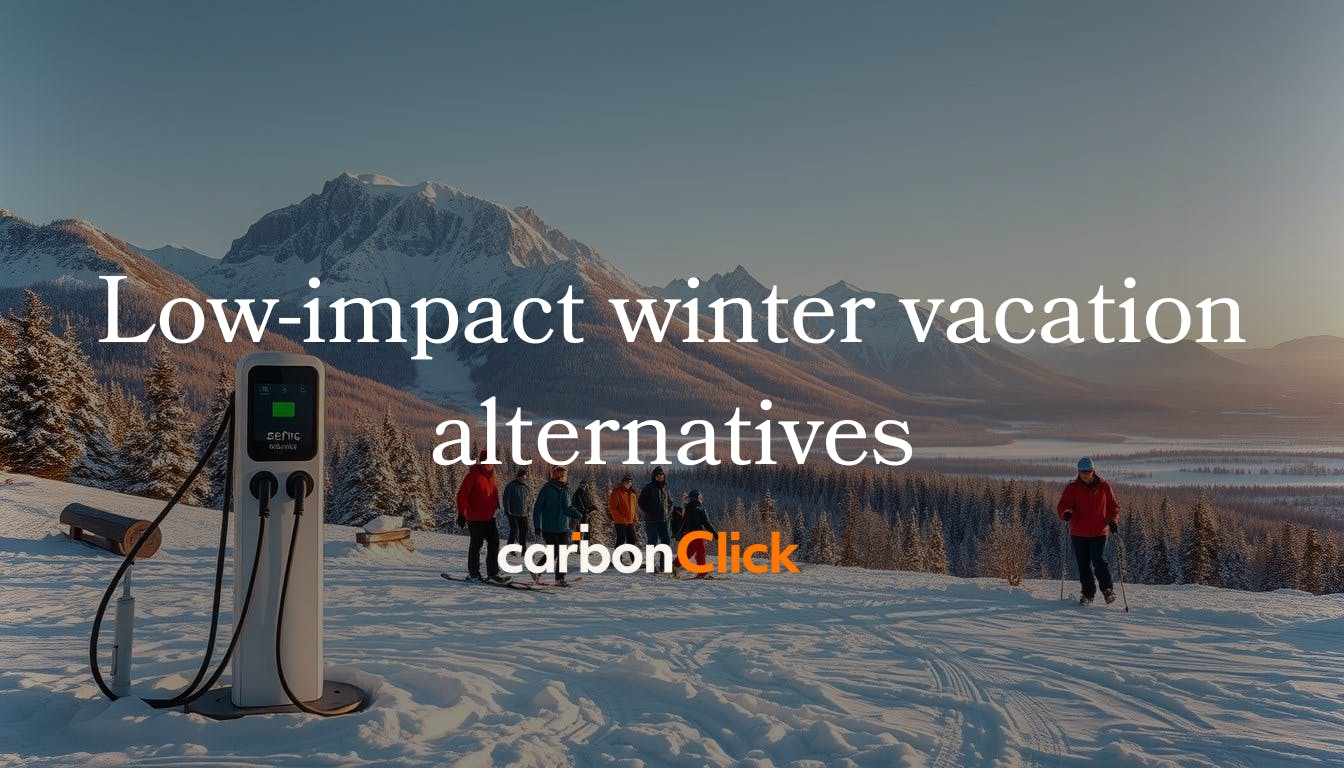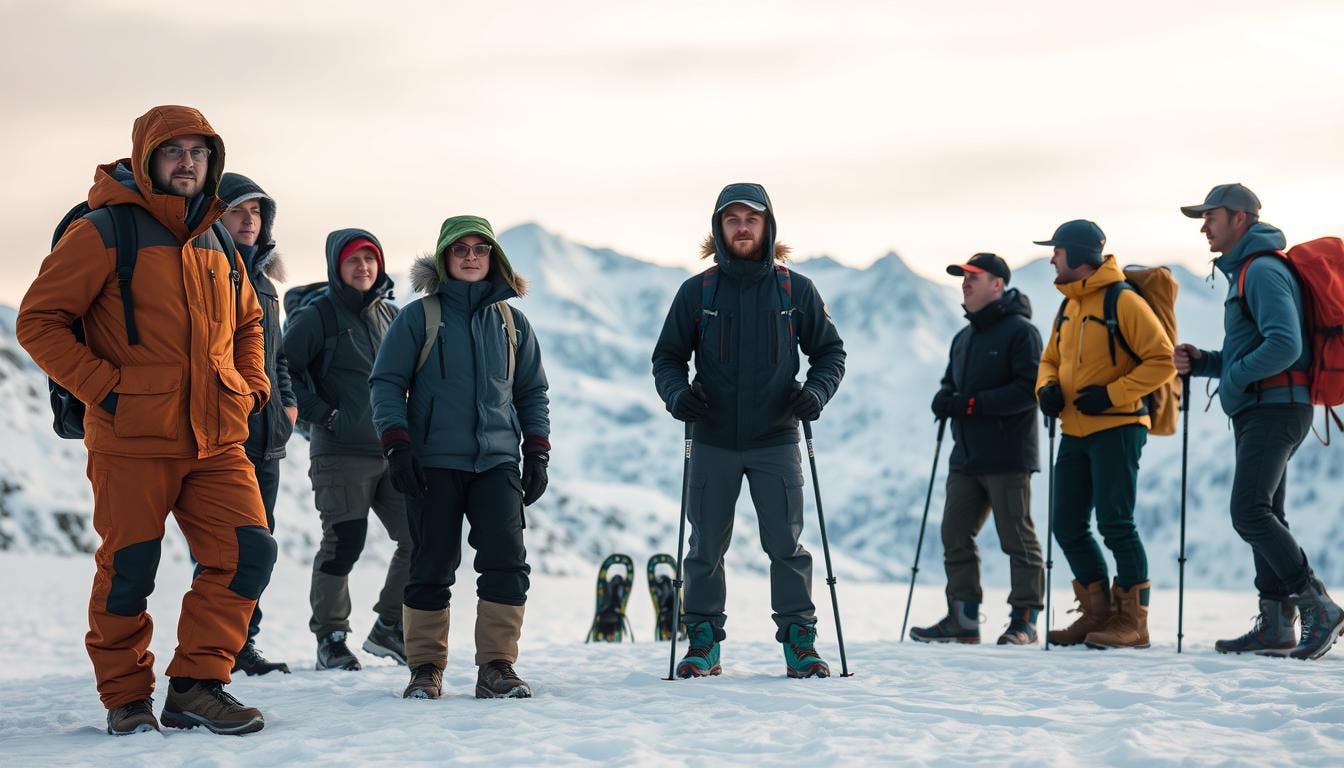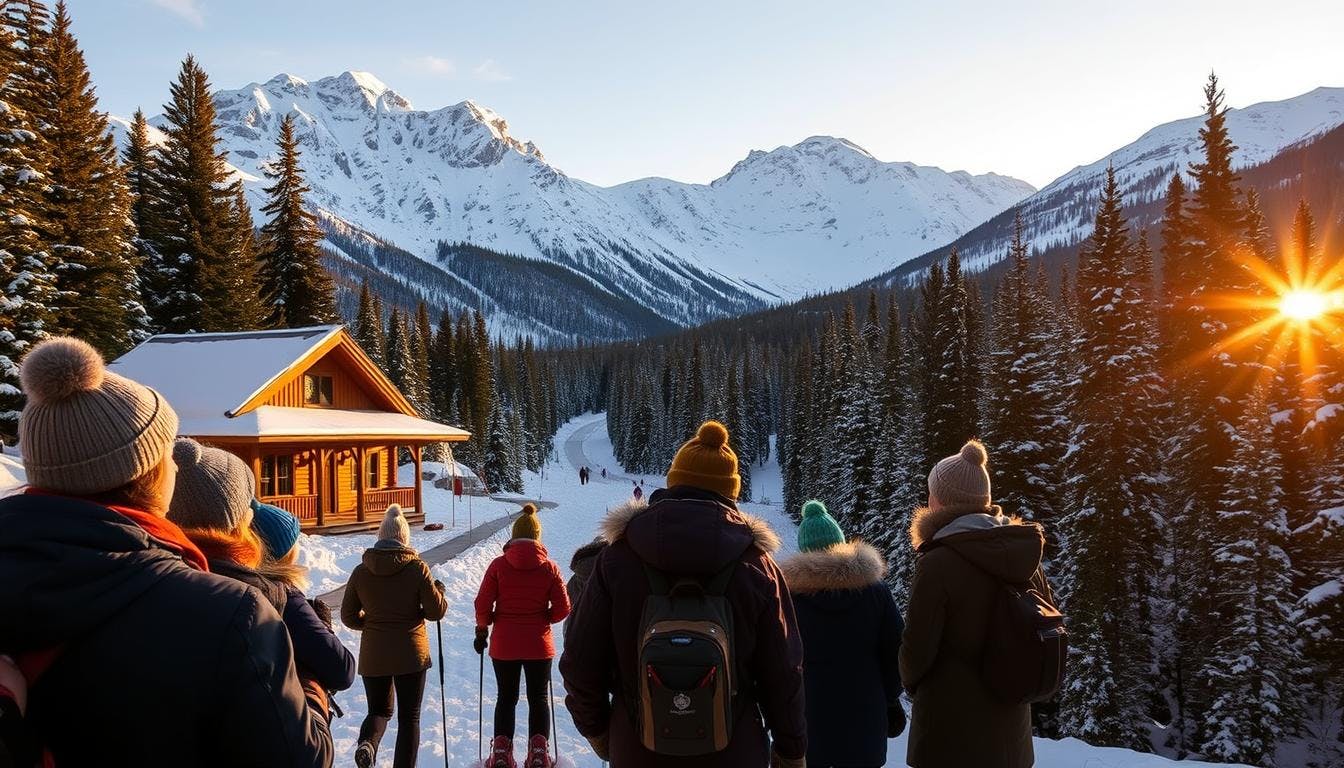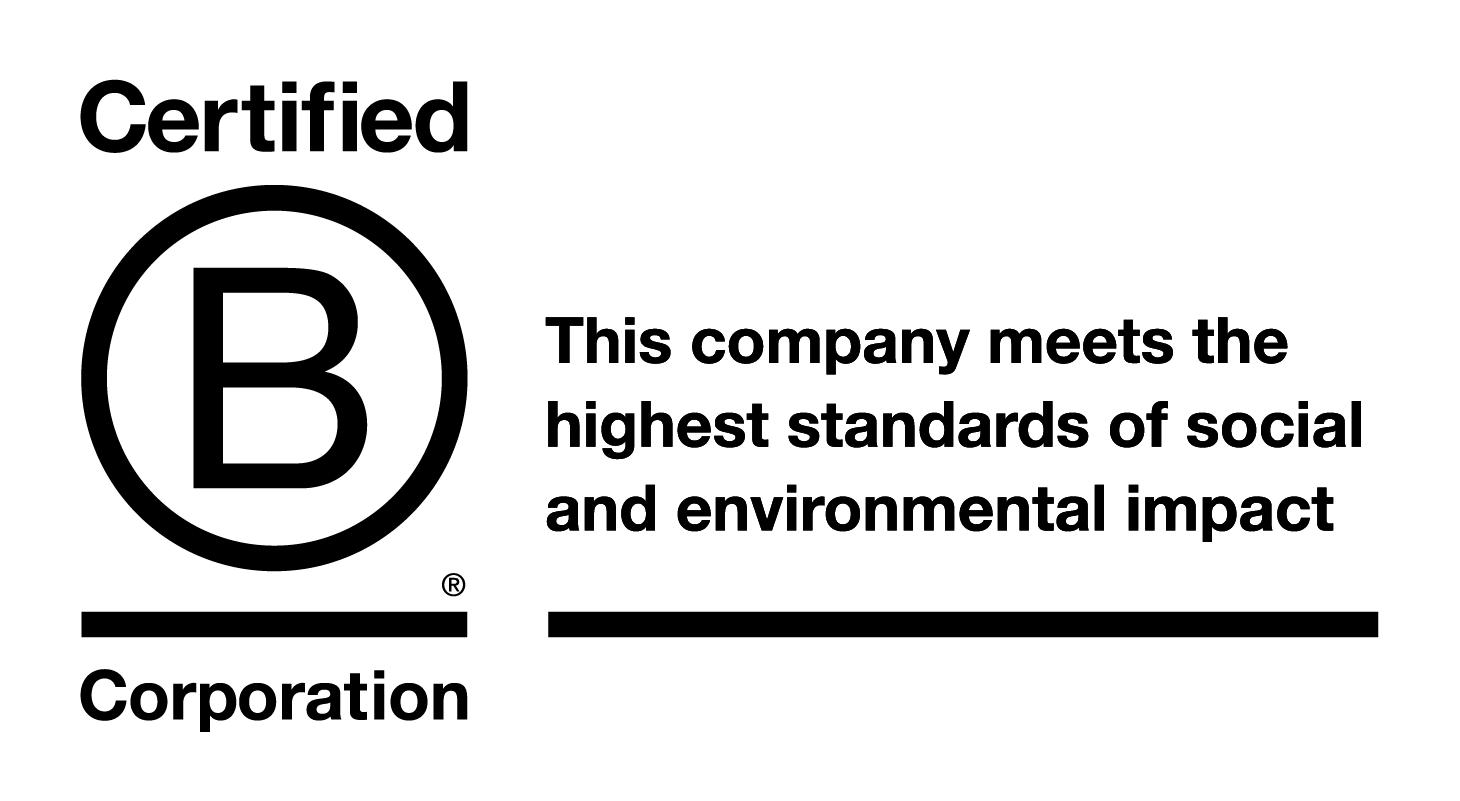Go the extra mile
Towards a cooler planet
Low-impact winter vacation alternatives
29 April 2025
Exploring the United States during the colder months can be both enjoyable and considerate of the natural world. Thoughtful travel choices allow visitors to experience breathtaking winter scenery and engaging activities while limiting their impact on the environment. From the snow-covered landscapes of Michigan’s Upper Peninsula to picturesque small towns across the country, there are many destinations that prioritise sustainable accommodation and low-emission transport options. Travellers can fully embrace outdoor adventures—such as hiking, skiing, or wildlife watching—without compromising their commitment to more mindful tourism. With careful planning, it’s possible to create lasting memories while treading lightly on the places we cherish.

Why choose a low-impact winter vacation?
Travelling in colder months has practical advantages for environmentally conscious visitors. With around 23% fewer tourists than in summer, places like Colmar in France avoid the overcrowding that can put pressure on local services. Fewer people also means less demand on water, energy, and transport. Off-season travel can reduce emissions overall—there’s less air traffic, and energy use in accommodation is typically lower. For example, energy-efficient cabins often use up to 40% less electricity than standard resorts. Choosing businesses that follow recognised sustainability standards also helps support local economies. A 2023 Expedia report found that 68% of US travellers consider sustainability when making plans. Selecting rail travel or low-impact lodges reflects this shift in priorities. Warmer destinations such as South Padre Island, which averages 22°C (71°F) in winter, show that it’s possible to enjoy mild weather without relying on high-emission trips. Travelling during the quieter season not only protects natural spaces—it also makes for a more relaxed and rewarding experience, often closer to home.

Top low-impact winter vacation alternatives
Low-impact travel is more effective when visitors make practical choices that reduce waste and energy use. Renting outdoor gear through services like REI’s programme can cut packaging waste by up to 73%. Initiatives such as Patagonia’s Worn Wear repair over 100,000 items each year, helping extend the use of clothing and reduce the need for new products. Choosing appropriate materials also matters—natural fibres like wool break down more quickly than synthetic fabrics. For ski trips, consider wax brands that avoid petroleum-based ingredients, such as MountainFLOW or EcoSki. Packing reusable items—like stainless steel toiletry containers and silicone food bags—can significantly cut down on single-use plastics, especially when flying. Following Leave No Trace principles is essential for protecting trails, particularly during the colder seasons. Outdoor equipment can be recycled at round-the-clock collection centres along major routes like the I-95 corridor (e.g., 42.3601° N, 71.0589° W). Using public transport or sharing rides to trailheads reduces traffic and emissions. When booking accommodation, look for lodges with verified energy-saving features. Off-peak travel not only eases crowding but also lessens pressure on local resources. Planning activities such as snowshoeing or wildlife watching closer to home is another way to reduce travel-related impact.
Plan your sustainable winter escape today
Booking a lower-impact holiday begins with verified accommodation options. According to Booking.com, more than half of travellers now use filters to select lodgings certified for sustainable practices. Prioritise places carrying seals recognised by the Global Sustainable Tourism Council (GSTC), such as Green Key or LEED. While some emissions from travel may be unavoidable, third-party schemes offer ways to address them. Providers like Cool Effect and Terrapass offer project-based solutions, with pricing typically ranging from $8 to $20 per metric tonne depending on the standard and transparency of the initiative. Safety should also be a priority for outdoor activities. Useful tools include the NOAA’s real-time avalanche forecasts for backcountry travel, the USDA Forest Service’s fire restriction maps, and local trail updates available through apps like AllTrails. Reduce waste by packing efficiently and improving energy use in rented spaces—thermal curtains and draft excluders are simple ways to retain heat. Reusable gear from companies such as REI and Patagonia’s Worn Wear programme also helps extend product life. Travelling during the off-season reduces crowding and lowers demand on local services. Activities like cross-country skiing or wildlife photography are ideal during quieter months. Wherever you go, follow Leave No Trace guidance to minimise your impact on natural areas.

Conclusion and next steps
Thoughtful travel decisions help protect natural environments while still offering meaningful experiences. To reduce emissions, focus on key strategies such as using public transport, packing reusable items, and choosing lodgings with recognised sustainability credentials. Before setting off, consult seasonal weather outlooks from the National Oceanic and Atmospheric Administration (NOAA) to plan appropriately. For up-to-date local information, state tourism offices can provide insights, and QR codes linked to Global Sustainable Tourism Council (GSTC)-approved schemes can confirm whether accommodation meets responsible travel standards. To better understand the environmental impact of your trip, use the EPA’s Carbon Footprint Calculator—it’s a useful tool for tracking progress toward more mindful travel habits. Consider nearby parks, beaches, or urban attractions that require fewer resources to access. Small choices made along the way contribute to preserving destinations for future travellers.
17 South Street
Auckland 1010
New Zealand
info@carbonclick.com- -
- X
Sign up. Be inspired. Get clicking.
Subscribe now to stay up to date with CarbonClick, carbon offsetting and climate action.
By signing up you agree to our Privacy Policy.


